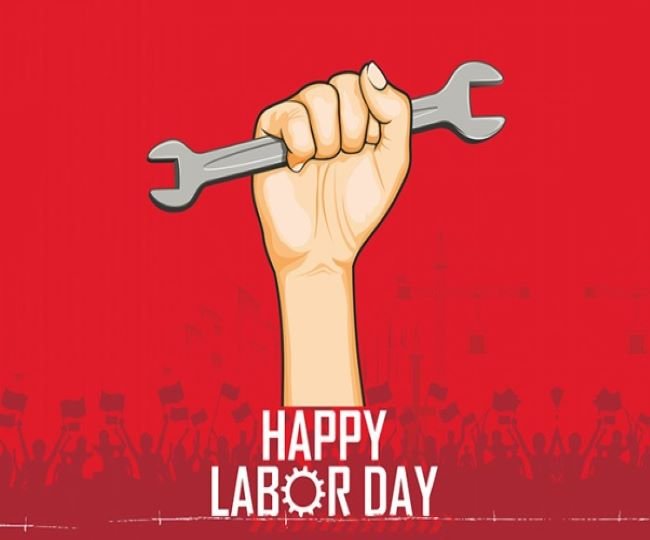By: Dr. Gyan Pathak
Forced labour in India is the highest in the world. About 11 million are presently under forced labour in the country, according to the Global Slavery Index 2023, released by Walk Free Foundation. The Global Slavery Index is a national breakdown of the extent of modern slavery in 160 countries.
It goes without saying that the policies adopted by the government is driving modern day slavery in India, which would further exacerbate according to the Joint Platform of 10 Central Trade Unions if Modi government implements the four labour codes that were brought in the name of ‘much needed, long overdue, biggest labour reform in independent India’. In government response score of India in the category of 40-49.9 per cent, the country presently scores far below Bangladesh and Sri Lanka.
ILO, Walk Free, and the International Organization for Migration (IMO) have collaborated on the development of the Global Estimates of Modern Slavery since 2016. “The 10 countries with the largest estimated numbers of people in modern slavery include some of the world’s most populous. Collectively, these countries— India (11 million), China (5.8 million), North Korea(2.7 million), Pakistan (2.3 million), Russia (1.9million), Indonesia (1.8 million), Nigeria (1.6 million), Türkiye (1.3 million), Bangladesh (1.2 million), and the United States (1.1 million) — account for nearly two in every three people living in modern slavery and over half the world’s population. Notably, six of these countries are G20 nations — India, China, Russia, Indonesia, Türkiye, and the United States,” the report says.
Though India has topped the list in absolute number of workers in modern slavery, North Korea has the highest prevalence per thousand people where it is 104.6 followed by Eritrea 90.3, Mauritania 32, Saudi Arabia 21.3, Turkiye15.6, Tajikistan 14, United Arab Emirates 13.4, Russia 13, Afghanistan 13, and Kuwait 13.
Estimated prevalence of modern slavery in India is 8 per thousand and number 11,050,000. In Asia and Pacific region prevalence rank of India is 6th. North Korea, Afghanistan, Myanmar, Pakistan and Papua New Guinea are top five countries in prevalence of modern slavery per thousand. Level of vulnerability to modern slavery in India is 56 per cent. Afghanistan has highest level of vulnerability at 86 per cent followed by Pakistan 80 per cent, and Papua New Guinea 79 per cent. On vulnerability, India ranks 10th in Asia and Pacific region.
With the exception of Japan, the countries with lowest prevalence of modern slavery are from northern or western Europe — Switzerland, Norway, Germany, Netherlands, Sweden, Denmark, Belgium, Ireland, and Finland. Yet, even in these countries, thousands of people continue to be forced to work or marry, despite their high levels of economic development, gender equality, social welfare, and political stability, as well as strong criminal justice systems.
An estimated 50 million people were living in situations of modern slavery on any given day in 2021, according to the latest Global Estimates of Modern Slavery. Of these people, approximately 28 million were in forced labour and 22 million were in forced marriages.
The most vulnerable — women, children, and migrants — remain disproportionately affected. More than 12 million of all people in modern slavery are children, and women and girls account for over half of them (54 per cent). Migrant workers were three times more likely to be in forced labour than non-migrant workers.
Modern slavery occurs in every country, regardless of wealth. More than half (52 per cent)of all forced labour and a quarter of all forced marriages can be found in upper-middle income or high-income countries.
The new Global Estimates revealed that the situation is worse than in 2016. Since then, the number of men, women, and children forced to work against their will or in a forced marriage has risen by 10 million.
The worsening situation has occurred against a backdrop of increasing conflict, environmental degradation, over a decade of global democratic decline, a global rollback of women’s rights, and the economic and social impacts of the COVID-19 pandemic and responses to it. These compounding crises have led to significant disruption to employment and education, increases in extreme poverty, and forced and unsafe migration, which together heighten the risk of all forms of modern slavery, particularly for those who are already vulnerable.
Asia and the Pacific is home to 56 per cent of the world’s population, including the two most populous countries India and China, and hosts the largest number of people in modern slavery, with estimated 15 million people in forced labour. This includes debt bondage among migrants exploited within the region, hereditary forms of bonded labour in South Asia, and state-imposed forced labour in China, North Korea, and other countries. The prevalence of forced marriage in Asia and the Pacific is second highest in the world, after the Arab States, impacting an estimated 4.5 females and 2.1males per every thousand people.
India, China, and North Korea had the highest number — and together accounting for two-thirds of all people in modern slavery in the region. In Pakistan and India, economic insecurity drives workers to take on risky jobs or loans from unscrupulous employers. Employers then exploit these workers by forcing them into labour-intensive jobs to repay their debts.
While almost all countries have criminalised corruption, the report said that there were reports that official complicity in modern slavery cases were not investigated in 19 countries and India is among them. In India, officials allegedly received bribes from traffickers in exchange for protection against prosecution, while in the state of Tamil Nadu; local politicians allegedly benefited from the commercial sexual exploitation of children and forced begging rings. (IPA Service)







